Occupational environment monitoring at a soap manufacturing factory
99,000 ₫
Note: The above price is calculated per sample. Prices may vary depending on the area of the environment to be monitored and market fluctuations. For more accurate pricing, please refer to the price list or contact our consulting staff directly.
Monitoring the environment of a soap manufacturing factory involves a session of collecting, analyzing, and evaluating factors in the workplace that may be harmful to workers health.
Table of Contents
Toggle1. Overview of Soap Manufacturing Factories
a. What is a soap manufacturing factory?
A factory for soap production is a facility specialized in manufacturing various types of soap, including main ingredients such as glycerin, sodium hydroxide, water, and additives like colorants, essential oils, and fragrances to produce soap products with diverse colors and scents to meet consumer demands. Common soap products on the market include hand soap, bath soap, laundry soap, and other types of soap.

b. Production stages in a soap manufacturing factory
The soap production process depends on the type of soap the factory intends to produce. However, most soap manufacturing factories generally include the following main stages:
- Mixing ingredients: Glycerin, sodium hydroxide, and water are mixed together to form a uniform mixture.
- Cooking: The ingredient mixture is heated in a large container and stirred thoroughly to ensure complete chemical reactions.
- Adding colorants, essential oils, and fragrances: When the soap mixture reaches the desired temperature and consistency, colorants, essential oils, and fragrances are added to create a variety of scents and colors for the product.
- Pouring into molds: The soap mixture is poured into molds to form soap products.
- Shaping: Once the soap has solidified, it is removed from the molds and shaped into products according to customer requirements.
- Drying: The soap products are dried to remove moisture and keep them dry.
- Packaging: The soap products are packaged and prepared for storage and delivery to customers.

c. Types of machinery used in soap manufacturing factories
Common machinery used in soap manufacturing factories includes:
- Mixers: Used to blend main soap ingredients such as lye, vegetable oils, and water.
- Distillation machines: Used to separate water and other substances from the soap mixture.
- Heaters: Used to maintain temperature and stabilize the soap mixture.
- Packaging machines: Used to package soap after production.
- Soap cutting machines: Used to cut soap blocks into smaller pieces for packaging or retail.
- Soap washing machines: Used to clean soap before packaging or retail.
- Powdering machines: Used to grind soap components to create white soap powder for production.

d. Occupational diseases that may affect workers in soap manufacturing factories
Workers in soap manufacturing factories may suffer from some occupational diseases, including:
- Skin allergies: Due to contact with chemicals such as lye, salts, fatty acids, and glycerin during production.
- Respiratory issues: From inhaling dust or toxic fumes during production, such as smoke, coal dust, carbon dioxide, sulfur dioxide.
- Eye problems: From exposure to soap vapors, fatty acid fumes, or other chemicals.
- Hearing issues: From exposure to loud noises during soap production.
- Musculoskeletal problems: From working in high humidity environments for prolonged periods.
- Digestive issues: From exposure to chemicals during production, though less common than in other industries.
- Nervous system issues: From exposure to toxic chemicals such as ammonia, lead compounds, and phosphorus.
- Mental health issues: From working in high-pressure environments and continuous operation of machinery.
Preventive measures, occupational safety protocols, protective equipment, and staff training are essential to minimize these risks.

e. Popular types of soap on the market
Popular types of soap on the market include:
- Bath soap: Used for cleaning the body during bathing.
- Hand soap: Used for washing hands.
- Laundry soap: Used for washing clothes and other items.
- Antibacterial soap: Used to kill bacteria and viruses.
- Natural soap: Made from natural ingredients such as coconut oil, olive oil, lavender, natural detergents; free from harmful chemicals and gentle on the skin.
- Makeup removal soap: Used to remove makeup from the face.
- Liquid soap: Used to clean surfaces and objects.

2. Overview of occupational environment monitoring services
a. What is occupational environment monitoring in a soap manufacturing factory?
Occupational environment monitoring (or workplace environment measurement) in a soap manufacturing factory involves collecting, evaluating, and analyzing measurement indicators of workplace environmental factors to take timely measures, minimize environmental hazards to workers’ health, and prevent occupational diseases. Occupational environment monitoring is mandatory for soap manufacturing factories.
It plays a crucial role in maintaining, protecting, and enhancing workers’ health because employees are the main resource of the company and directly generate profit. Workers frequently exposed to hazardous factors exceeding permissible limits may suffer health issues and occupational diseases.
REGISTER FOR OCCUPATIONAL ENVIRONMENT MONITORING SERVICE
b. An Toan Viet’s occupational environment monitoring program
An Toan Viet’s occupational environment monitoring program is designed by engineers specialized in occupational safety and environmental protection. Aiming to ensure the health and safety of workers, the program uses modern measurement methods to monitor air quality, water quality, microclimate factors, physical factors, dust, and more in the workplace. This program is essential for ensuring a safe working environment and protecting workers’ health.
Additionally, An Toan Viet’s monitoring program is important for researching and developing new solutions to improve workplace environmental quality. With the dedication and professionalism of its monitoring experts, An Toan Viet’s exclusive program represents a breakthrough in occupational safety and environmental management in Vietnam.

c. Standardization in occupational environment measurement procedures
Standardization in An Toan Viet’s workplace measurement procedures is critical for ensuring accurate and reliable results. The program adheres to recognized standards and procedures of the Ho Chi Minh City Department of Health, ensuring that collected data can be reliably used in workplace assessments and in decisions to improve the work environment to protect employees’ health.
These standardized procedures also guarantee that measurements are conducted by a highly qualified team of monitoring specialists with years of experience, allowing managers and experts to trust An Toan Viet’s results and make accurate decisions for worker safety and environmental protection.
By applying standardized measurement procedures, An Toan Viet demonstrates its commitment to ensuring a safe working environment and safeguarding workers’ health, while contributing to the development and enhancement of occupational safety and environmental management in Vietnam.
d. Reporting results of occupational environment monitoring in soap manufacturing factories
Monitoring results are prepared according to Form No. 04, Appendix III issued with Decree 44/2016/ND-CP and prepared in two copies: one sent to the factory that contracted the monitoring service, and one retained by the monitoring organization.
The retention period of occupational environment monitoring results is indefinite according to legal regulations.

e. Frequency of occupational environment monitoring according to the law
According to Clause 2, Article 18 of the Law on Occupational Safety and Hygiene 84/2015/QH13, employers must conduct workplace monitoring of harmful factors at least once a year.
f. Deadline for submitting occupational environment monitoring reports
The deadline for submitting reports is before December 31 each year. Companies operating production factories are required to submit monitoring results to the Department of Health in the locality where the business has its headquarters and where employees work.
When there are changes in technology, production processes, or when renovating/upgrading workplaces that may introduce new hazardous factors affecting worker health, production companies must update occupational hygiene records with relevant information requiring environmental monitoring.
g. Penalties for violations of occupational environment monitoring regulations for employers
According to Article 27 of Decree No. 12/2022/ND-CP dated January 17, 2022, regulating administrative penalties in labor, social insurance, and Vietnamese workers working abroad under contracts:
- Clause 2: Fines from 2,000,000 – 5,000,000 VND for employers who fail to publicly disclose monitoring results at the workplace and places where hazards are evaluated immediately after receiving monitoring results and hazard evaluation outcomes.
- Clause 3: Fines from 20,000,000 – 40,000,000 VND for employers who fail to conduct occupational environment monitoring to control harmful effects on workers’ health as required by law.
- Clause 4: Fines from 40,000,000 – 60,000,000 VND for employers who collude with monitoring organizations to commit fraud in occupational environment monitoring, but not to the level of criminal liability.
3. Harmful environmental factors for workers in a soap manufacturing factory
During the soap production process, workers may be exposed to harmful environmental factors such as:
- Dust: During soap production, the process of dissolving catalysts and stirring ingredients may generate dust and airborne particles, causing respiratory problems for workers.
- Chemicals: Soap factories may use chemicals such as acids, alkalis, and other detergents. Exposure to these chemicals can be hazardous to skin, eyes, and respiratory health, leading to occupational diseases like dermatitis, allergies, and pulmonary edema.
- Temperature: The soap production process may generate high temperatures, causing atmospheric discomfort for workers.
- Humidity: During mixing, pressing, and packaging, humidity may be created, leading to atmospheric and moisture-related issues for workers.
- Noise: Equipment in a soap factory can produce noise, affecting workers’ health and psychological well-being.
- Lighting: Work areas in a soap factory may require strong or dim lighting, sometimes negatively affecting workers’ eyes.
- Air quality: Soap production can generate emissions and unpleasant odors, causing atmospheric issues for workers.
- Hazardous materials: Soap factories may use hazardous materials in production. Exposure to these materials can endanger workers’ health.
- Waste materials: The soap production process can produce a large amount of waste materials.
REGISTER FOR WORKPLACE ENVIRONMENT MONITORING SERVICE
4. Measures to improve working conditions in a soap manufacturing factory
Measures to improve working conditions in a soap manufacturing factory may include:
- Implement health protection measures: Soap factories should apply health protection measures for workers, including providing full personal protective equipment, training employees on its use, and establishing health insurance policies.
- Create a comfortable workspace: Factories should ensure a comfortable working environment with appropriate humidity and temperature, and improve lighting systems to minimize eye strain for workers.
- Pollution control: Factories should implement pollution control using air filtration equipment and wastewater treatment. Wastewater treatment must follow proper procedures and comply with environmental safety standards.
- Employee training and education: Invest in training employees about production processes, hygiene, occupational safety, and environmental protection to minimize production risks.
- Regular inspection and assessment: Conduct periodic inspections and evaluations of workplace environment quality to ensure compliance with safety standards, protect workers’ health, and safeguard the environment.
- Periodically conduct workplace environment monitoring in factories, collect and analyze harmful factors for workers, and adjust to reduce risks to prevent occupational diseases.
5. Benefits of periodic workplace monitoring in soap factories
An Toan Nam Viet provides excellent benefits for businesses using occupational environment monitoring services according to Decree 44/2016/ND-CP on managing and controlling harmful factors in the workplace affecting workers.
- Businesses can proactively control harmful factors in workshops or factories.
- Receive advice and recommendations to minimize harmful factors and improve workplace quality.
- Indirectly protect human resources, a key factor in business development.
- Reduce occupational disease effects on human health, thereby minimizing future treatment costs.
- Improved worker health enhances product quality and ensures consistent output.
- Comply with occupational safety laws, avoiding legal risks.
- Enhance credibility and professionalism in all aspects, boosting the company’s brand.
An Toan Nam Viet’s environmental monitoring service is a solution to minimize occupational disease risks, contributing to a clean and high-quality working environment.

6. Nationwide occupational environment monitoring center
An Toan Nam Viet Workplace Environment Monitoring Center is a professional unit supervising and measuring occupational environment quality across all provinces in Vietnam. With a team of experienced monitoring specialists, the center uses modern equipment ensuring accuracy and reliability.
Besides providing monitoring services, the center assists clients in planning, handling, and tracking workplace environmental issues. With the motto “customer first,” the center prioritizes client satisfaction and commits to offering the best solutions.
REGISTER FOR WORKPLACE ENVIRONMENT MONITORING SERVICE
With investments in technology, equipment, and human resources, An Toan Nam Viet’s monitoring center has become a reputable unit in workplace environment monitoring in Ho Chi Minh City with the following goals:
- We always value our brand reputation and the quality of our services.
- We provide clients with the best and most suitable solutions possible.
- Together with experienced Masters and Engineers, we aim to protect the environment and benefit businesses.
- Clients choosing An Toan Nam Viet Environmental Monitoring receive professional service from experts and the best cost benefits.
The workplace monitoring process at An Toan Nam Viet includes:
- Before monitoring, ensure all machinery and equipment are calibrated according to legal regulations.
- Follow the committed monitoring procedures as agreed with the Department of Health.
- Report monitoring results honestly to the employer.
- If results indicate unsafe conditions, An Toan Nam Viet will support corrective measures, and the factory will implement:
- Implement measures to improve working conditions, minimize harmful factors, and prevent occupational diseases.
- Organize health check-ups to detect occupational and related diseases early for employees in unsafe workplaces.
- Provide in-kind compensation for workers as regulated by labor law.

7. Workplace environment monitoring price list
To help businesses perform professional and effective workplace monitoring, An Toan Nam Viet provides clients with a workplace environment monitoring service price list with high quality and reasonable costs.
- Our price list details the costs of all monitoring services we provide, including transportation, measurement, analysis, and reporting expenses. Clients can trust the accuracy and reliability of our monitoring reports.
- We commit to offering competitive and reasonable prices while being ready to provide prompt and professional consultation on monitoring services.
- With An Toan Nam Viet’s price list, clients can easily choose service packages that meet their needs. We guarantee maximum satisfaction with professional service quality.
No comments yet

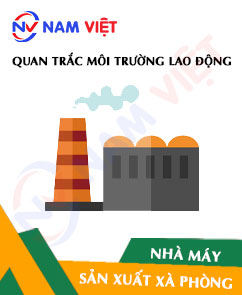
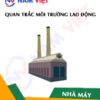
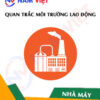

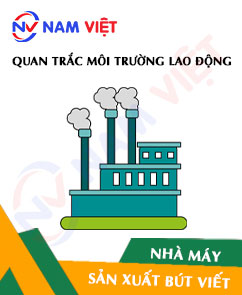

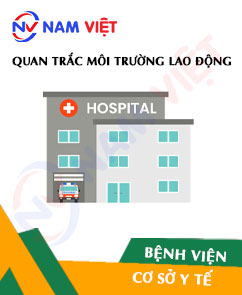




Review Occupational environment monitoring at a soap manufacturing factory
There are no reviews yet.